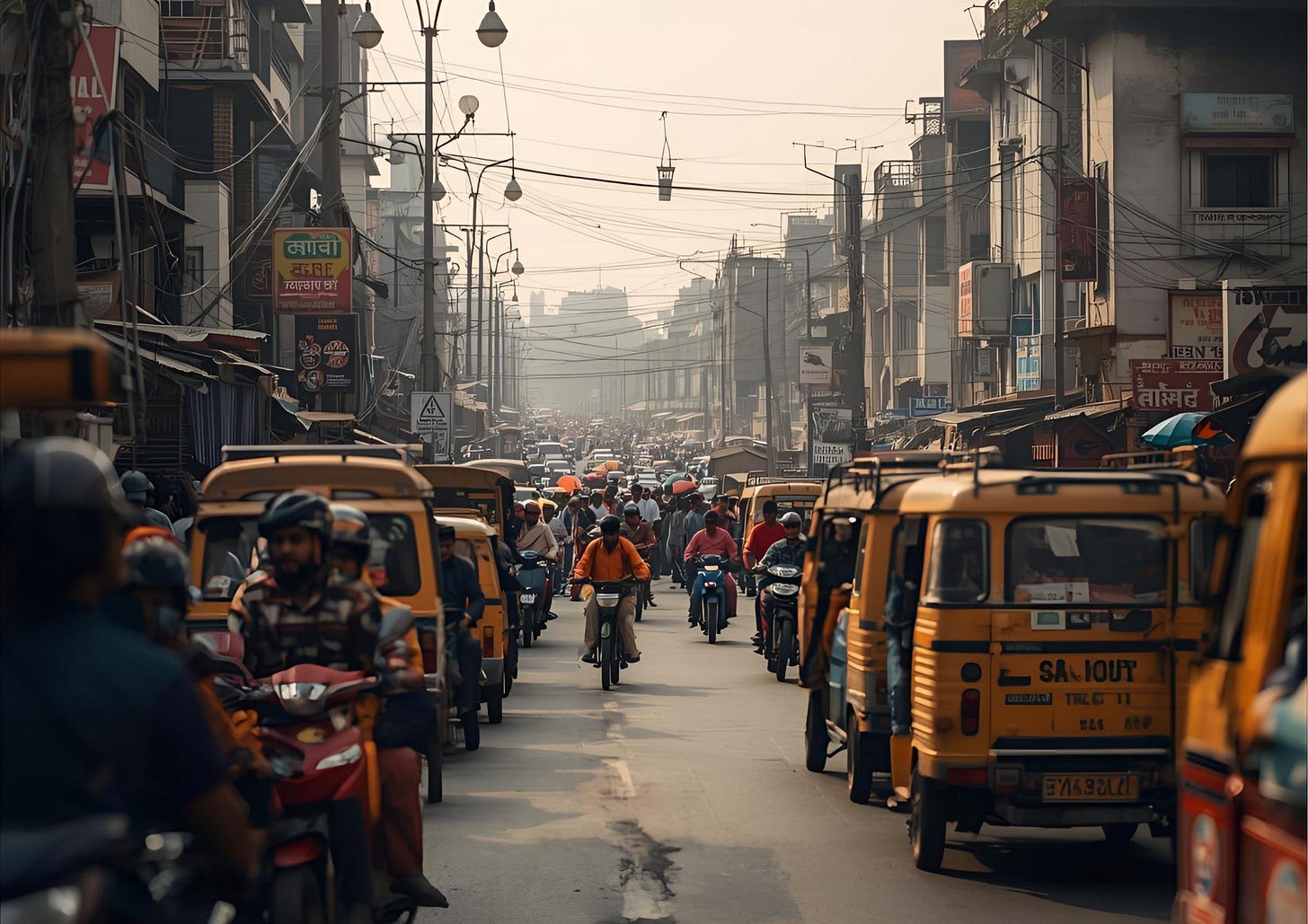India’s Urban Mobility Test: When Metros Meet the Last Mile
The future of urban commute rests on how effectively public transit is integrated with well-planned last-mile systems.
View as PDF
Murari Srinivasa: FLAME University, Pune
Rajluxmi V. Murthy: IIM Bangalore
SDG 9: Industry, Innovation and Infrastructure | SDG 11: Sustainable Cities and Communities
Institutions: Ministry of Housing and Urban Affairs
Every morning, millions of Indians squeeze into buses, crowd metro carriages, or flag down auto-rickshaws. By 2050, India’s urban population is expected to nearly double to 900 million. Whether these journeys are smooth or suffocating will shape not only the quality of city life but also the productivity of the economy.
Policy has not ignored the challenge. The National Urban Transport Policy requires every city of more than a million people to develop rapid transit, and more than ₹2 trillion has already been invested in metro systems across at least 20 cities. States are piloting bus corridors, cycle-sharing and pedestrian upgrades. These are welcome steps. But the core question is not how many metro miles are built; it is how well different modes connect and complement one another.
Complementary, not Competing
Debates often pose a false choice: metros versus ride-hailing, buses versus bike-shares. In practice, these modes have been seen to thrive when they work together. Metros and buses cover the long haul; shared services like carpooling, ride-hailing or bicycles bridge the “first and last mile.” Without that link, passengers are more likely to fall back on private vehicles.
Ridership across most of India’s urban metro systems has fallen short of projections. The failure of Chennai’s Mass Rapid Transit System (MRTS) and the underperformance of Ahmedabad’s Bus Rapid Transit System (BRTS) underline a crucial lesson: in countries like India, the success of billion-rupee transport projects hinges on last-mile connectivity. Shared mobility offers a flexible way to bridge these gaps, extend the reach of public networks, and curb reliance on private cars.
Globally, multimodal and intermodal travel is routine: in London or Singapore, commuters combine trains, buses, and shared rides in a single journey. India needs to make integration work for its diverse commuters and varied economic realities.
The Affordability Barrier
In high-income countries, transport usually takes 10-15 percent of daily income. In India, it can swallow up to 20 percent for low-wage workers. That makes commuters highly sensitive to fares, especially when each trip means paying separately for a Metro ride, a feeder bus, and a shared auto. For low-income travellers, the ‘rational’ choice is often the cheapest one: overcrowded buses or even walking. Delhi Metro’s 2017-18 fare hikes proved the point: ridership fell on older corridors even as new lines opened.
Affordability, however, comes with a nuance. In India’s metro rail systems, fares cannot be viewed in isolation: commuters also bear the cost of last-mile travel — whether by auto-rickshaw, bus, or even the parking fees for personal two-wheelers. The lesson is clear: what counts as “affordable” depends on who the commuter is. Unless fare and network integration reflect these diverse realities, even the most sophisticated transit systems will fall short. Turning that principle into practice demands more than design tweaks — it hinges on governance.
Governing Mobility in the Digital Age
Jurisdictions for planning, operations, and regulation are often split among municipal bodies, state departments, and specialised agencies, with limited coordination. Regulatory gaps deepen the problem: how to license shared mobility, who regulates tariffs, and who ensures safety? Without clear frameworks, services risk being fragmented and passengers underserved.
Technology can help bridge some of these divides. Ride-hailing platforms have gained wide traction in India despite recurring issues of reliability and surge pricing. Research shows that commuters use these services fully aware of their shortcomings — largely because no viable last-mile alternatives exist. The policy challenge is to move beyond ad-hoc feeder links and build a coherent governance structure for last-mile planning and delivery. Encouragingly, a growing body of research and public engagement is now drawing attention to these gaps — an opportunity policymakers can build upon.
A Decisive Moment
India’s cities stand at a crossroads. One path leads to congestion, exclusion, and environmental stress; the other to accessibility, sustainability, and resilience. While advances in private mobility often capture the spotlight, the real test lies in the adoption and sustained use of public transit systems -- the backbone of any densely populated, fast-growing urban economy. The last-mile challenge is solvable, but only through a holistic approach that aligns design with commuter realities. How these solutions are implemented and governed will help define the urban legacy of 21st-century India.
View as PDF
Authors:

The discussion in this article is based on the authors’ working paper on the subject. Views are personal.


